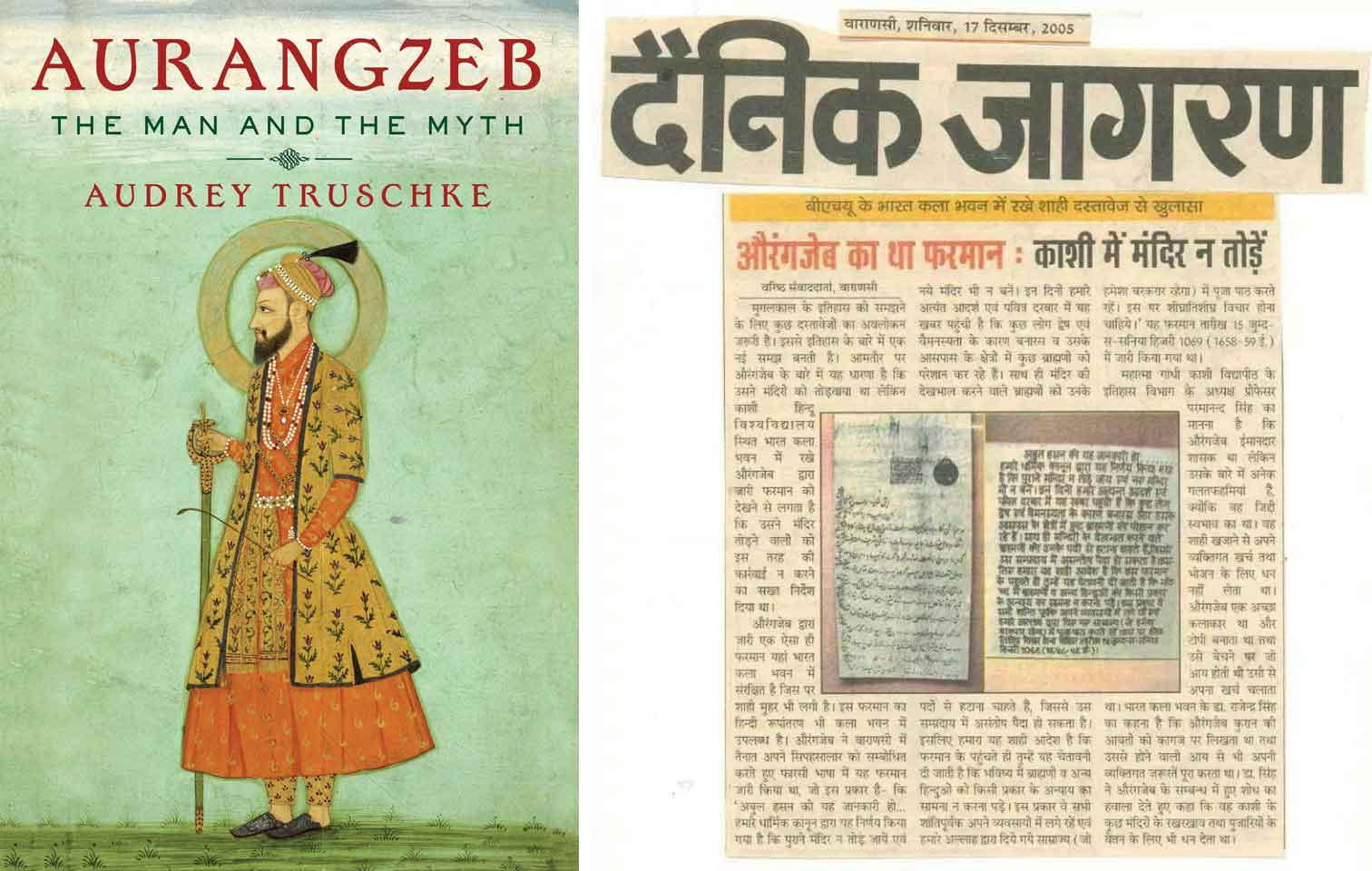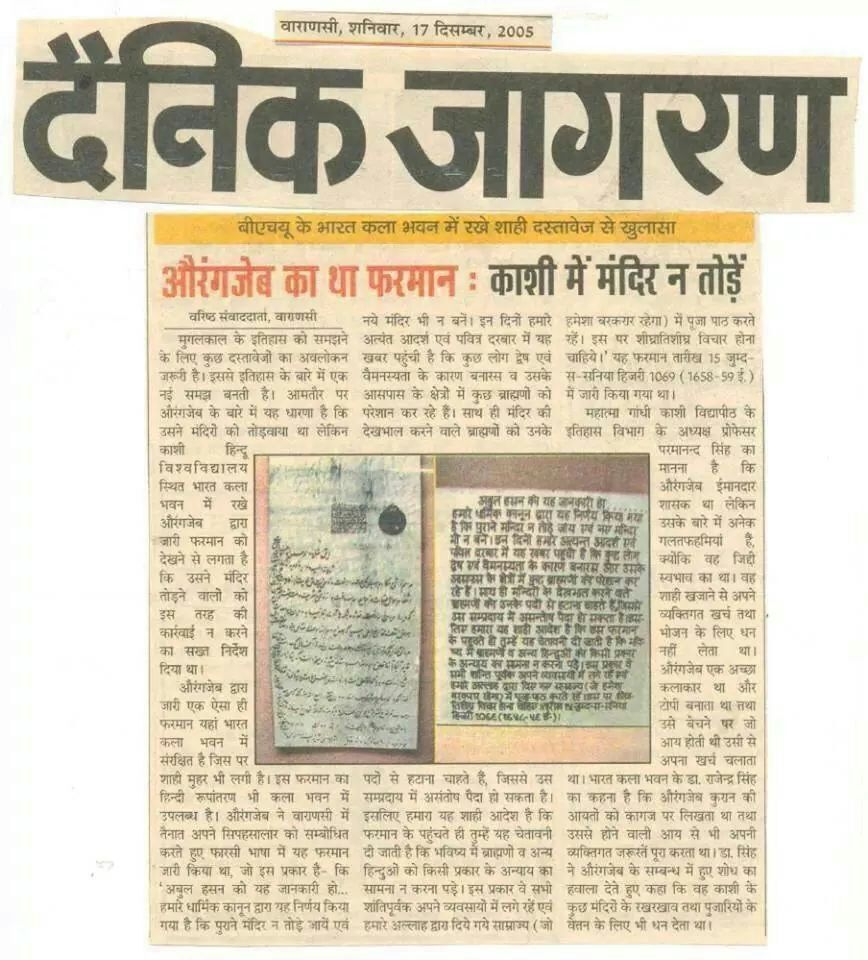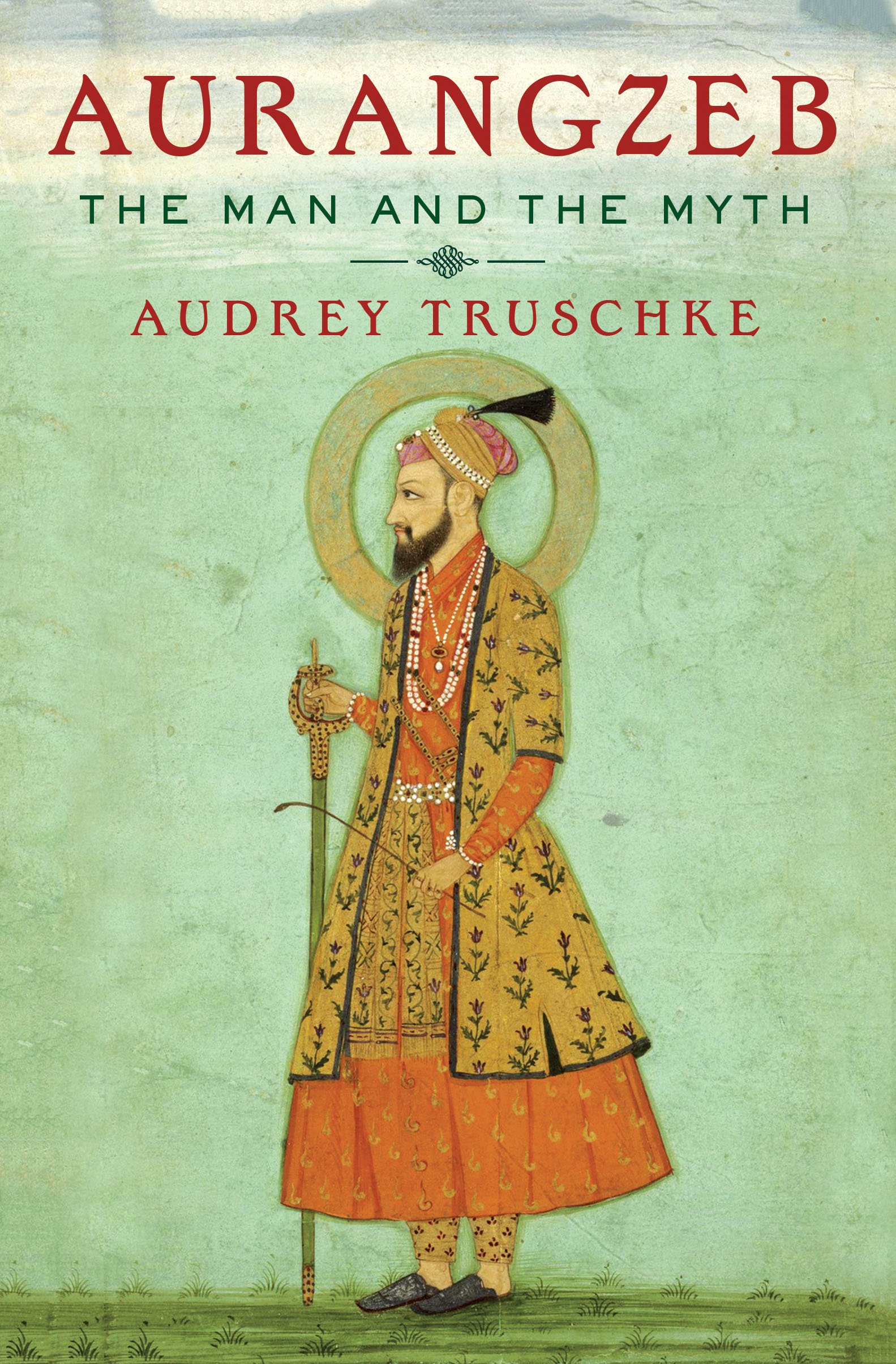
The cruelty of Aurangzeb has been in the news for several weeks now given the resurgence in temple-mosque politics, 400 years after his death. Hindutva trolls and extremist groups spare no opportunity to remind us of how he razed several Hindu temples to the ground to build mosques.
The most popular example given is that of the Kashi Vishwanath temple that was demolished at the orders of the Mughal emperor, and how the Gyanvapi mosque was built using its debris. Today the mosque stands adjacent to the temple that was reconstructed later, but the controversy rages on as is evident in the ongoing case surrounding the court-ordered video survey and discovery of a Shivling on the premises.
But history is also replete with documented evidence of Aurangzeb having protected temples as well. Take for instance a ‘farman’ or royal decree issued by him to not demolish temples. The document that bears the emperor’s seal is displayed at the Bharat Kala Bhavan of the Banaras Hindu University (BHU). In fact, Hindi newspaper Dainik Jagran had reported this as far back as 2005! The document is dated 1658. Here’s a clipping of the news report.

The farman says, “Abul Hasan is hereby informed that under our religious laws, it has been decided that old temples will not be demolished. No new temple will be allowed to be constructed either. It has also come to our attention that some people are harassing Brahmins in and around Varanasi out of spite, and want to remove them from their positions as caretakers of temples. We therefore issue this farman to warn such people against harassing Brahmins or Hindus in the future. This way they can go about their livelihood in peace and continue conducting prayers as is the eternal message of Allah. This needs to be considered immediately.”
The same farman was also mentioned by historian Audrey Truschke in her book titled Aurangzeb: The Man and the Myth. Some excerpts were published in Scroll.in in a February 2017 piece, where the author gave a few more such examples. Sample this:
“In 1687, the emperor gave some empty land on a ghat in Benares (which was, incidentally, near a mosque) to Ramjivan Gosain in order to build houses for “pious Brahmins and holy faqirs”. In 1691 Aurangzeb conferred eight villages and a sizable chunk of tax-free land on Mahant Balak Das Nirvani of Chitrakoot to support the Balaji Temple. In 1698 he gifted rent-free land to a Brahmin named Rang Bhatt, son of Nek Bhatt, in eastern Khandesh in central India. The list goes on and includes temples and individuals in Allahabad, Vrindavan, Bihar, and elsewhere.”
“Aurangzeb carried on the traditions of his forefathers in granting favours to Hindu religious communities, a continuity underscored by his dealings with the Jangam, a Shaivite group. The Jangam benefited from Mughal orders beginning under Akbar, who confirmed their legal rights to land in 1564. The same Jangam received several farmans from Aurangzeb that restored land that had been unfairly confiscated (1667), protected them from a disruptive local Muslim (1672), and returned illegally charged rent (1674). Such measures ensured that pious individuals could continue their religious activities, a component of Aurangzeb’s vision of justice.”
“Aurangzeb enacted similarly favourable policies towards Jain religious institutions. Again following Akbar’s example, Aurangzeb granted land at Shatrunjaya, Girnar, and Mount Abu – all Jain pilgrimage destinations in Gujarat – to specific Jain communities in the late 1650s. He gave Lal Vijay, a Jain monk, a monastery (poshala), probably sometime before 1681, and granted relief for a resting house (upashraya) in 1679.”

Now, this is not to say Aurangzeb did not demolish other temples. There is documentary evidence of that as well. But one must remember all historical facts, especially if the alleged actions of one man from 400 years ago are used to judge modern Muslims, often painted as hateful and cruel by right-wing extremist groups.
Meanwhile, the Supreme Court is all set to hear a plea by the Anjuman Intezamia Masjid (AIM), the committee that manages the Gyanvapi mosque in Varanasi to stay the video survey that had been ordered there by a local court. The purpose of the video survey was to ascertain if a temple existed on the spot where the mosque was built. Controversy erupted yesterday when lawyers of the Hindu petitioners claimed that a Shivling had been discovered in the Wazu Khana (place where devotees wash their hands before prayers). Mosque authorities however say that it is just a portion of an old fountain that used to be at the spot.
Related:
Shivling ‘found’ on Gyanvapi mosque premises, court orders area sealed
Gyanvapi case: Two more advocate commissioners added to Shringar Gauri survey team
Gyanvapi case: Court to pronounce order in Shringar Gauri temple survey matter today
Gyanvapi case: One out of five withdrawing name from Maa Shringar Gauri temple petition?
Gyanvapi case: Videographic survey of Maa Shringar Gauri temple begins
Gyanvapi case: Allahabad HC stays ASI survey, proceedings before lower court
Gyanvapi case: Varanasi court to hear petition to hold prayers in Shringar Gauri temple